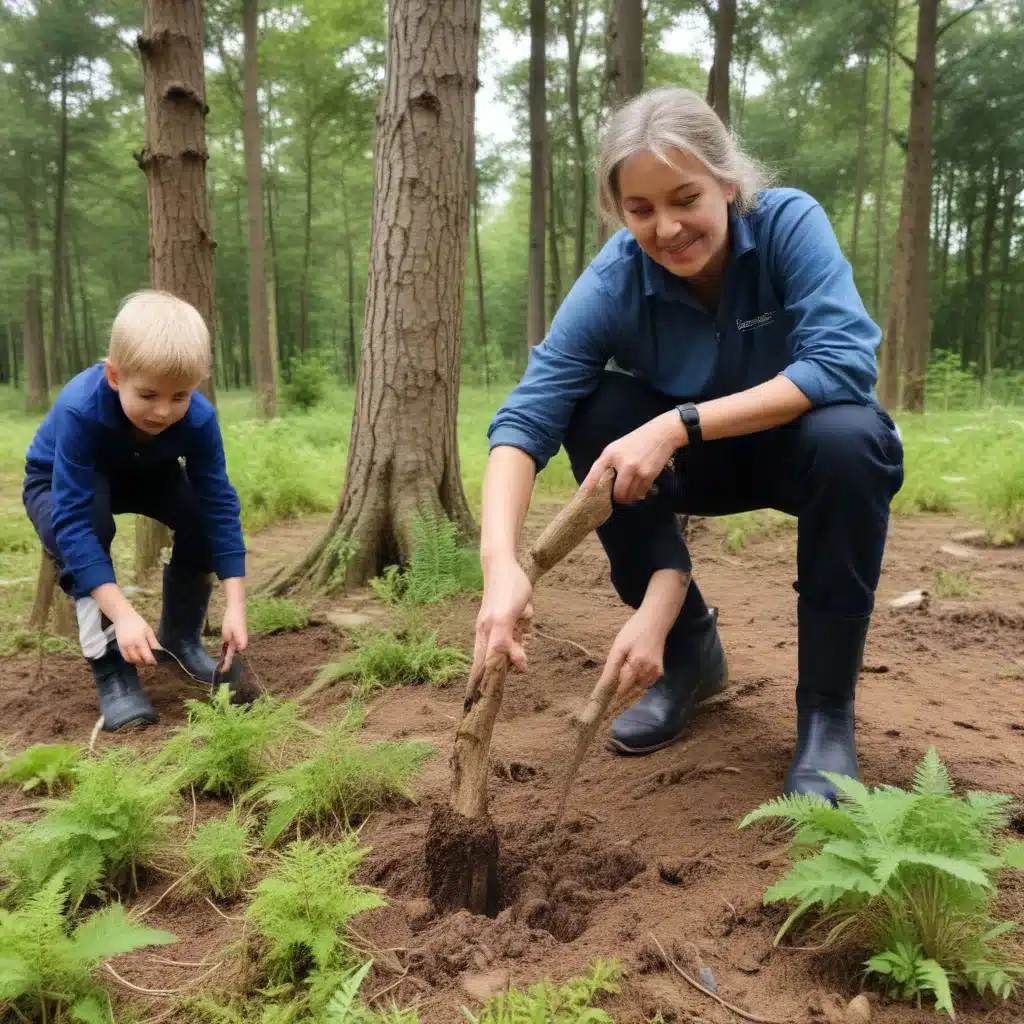
Promoting Resilient Landscapes Through Diverse Tree Planting
As a tree care specialist in South Florida, I’ve seen firsthand how the region’s unique tropical climate presents both opportunities and challenges for cultivating a thriving, resilient urban forest. Amidst the constant threat of powerful hurricanes and the rise of exotic pests and diseases, the key to safeguarding our cherished landscapes lies in thoughtful, diverse tree planting strategies. By carefully selecting native, drought-tolerant, and storm-resistant species, we can promote the long-term health and ecological benefits of our trees, all while enhancing the overall pyrodiversity and adaptability of our local ecosystems.
Planting Guidelines
When it comes to establishing a durable tree canopy in South Florida, proper site preparation and planting techniques are paramount. Start by thoroughly assessing the soil conditions – testing for nutrient levels, drainage, and pH – and make any necessary amendments to ensure optimal growing medium. Carefully select an appropriate planting location, considering factors like overhead power lines, proximity to structures, and potential for future root expansion.
When it’s time to plant, employ best practices such as digging a shallow, wide hole, positioning the root ball at the correct depth, and backfilling with the original soil. Proper spacing and density are also crucial, as overcrowding can lead to increased competition, pest susceptibility, and storm vulnerability. As a general rule, allow for ample room to grow – with spacing ranging from 20 to 40 feet between canopy trees, depending on the mature size.
Recommended Tree Species
To cultivate a truly resilient landscape, it’s essential to diversify the tree species within your South Florida property. Start by prioritizing native trees adapted to the region’s subtropical climate, such as the majestic Live Oak (Quercus virginiana), the vibrant Gumbo Limbo (Bursera simaruba), and the aromatic Pigeon Plum (Coccoloba diversifolia). These species not only thrive in local conditions but also provide invaluable ecological services, from food and shelter for native wildlife to carbon sequestration and stormwater management.
In addition to native options, consider incorporating drought-tolerant trees that can withstand the region’s periodic water scarcity, such as the drought-adapted Geiger Tree (Cordia sebestena), the salt-tolerant Seagrape (Coccoloba uvifera), and the hardy Jamaican Dogwood (Piscidia piscipula). These species can help ensure the continued vitality of your landscape, even during prolonged dry spells.
Lastly, select storm-resistant tree species that can better withstand the powerful winds and heavy rains associated with tropical storms and hurricanes. Favored options include the sturdy Sabal Palm (Sabal palmetto), the flexible Mahogany (Swietenia mahagoni), and the wind-resilient Tamarind (Tamarindus indica). By incorporating this diversity, you’ll create a layered canopy that can better withstand the extremes of South Florida’s climate.
Soil Considerations
Healthy, well-nourished soil is the foundation for thriving trees, and regular soil testing is essential for identifying any nutrient deficiencies or imbalances. If necessary, amend the soil with organic matter, such as compost or peat moss, to improve drainage, aeration, and nutrient retention. It’s also important to ensure that the planting site has adequate drainage to prevent waterlogging and root rot, especially during the region’s intense rainy seasons.
Pest and Disease Management
Even the most carefully selected and well-tended trees can fall victim to a range of pests and diseases common to South Florida. Vigilant monitoring and early intervention are key to preventing widespread issues. Keep an eye out for signs of insect infestations, such as the destructive Asian Cycad Scale (Aulacaspis yasumatsui) or the invasive Rugose Spiraling Whitefly (Aleurodicus rugioperculatus), and address them promptly with targeted, integrated pest management strategies. Similarly, be on the lookout for fungal infections, like Fusarium Wilt (Fusarium oxysporum f. sp. palmarum) in palms, and treat them accordingly to protect the overall health of your trees.
Fertilization and Nutrient Needs
Proper fertilization is crucial for maintaining the vigor and resilience of your South Florida trees. Time your applications to coincide with the region’s growing seasons, and consider using a balanced, slow-release formula that provides a steady supply of essential macronutrients (nitrogen, phosphorus, and potassium) and micronutrients (such as iron, manganese, and magnesium). For a more natural approach, incorporate organic amendments like compost or aged manure to enrich the soil and support the overall microbial activity.
Tropical Storm Readiness
As South Florida residents well know, preparing for the impact of powerful hurricanes and tropical storms is a constant priority. When it comes to your trees, regular canopy maintenance through strategic pruning can help reduce the risk of branch failure and tree uprooting during high winds. Additionally, ensure that your larger trees are properly anchored and staked to provide additional stability. Finally, develop a comprehensive disaster preparedness plan, which may include identifying potential hazard trees, securing loose items, and having a post-storm cleanup strategy in place.
Palm Tree Maintenance
Palms are an iconic and beloved part of the South Florida landscape, but they require specialized care to thrive. Routine frond trimming, performed at the appropriate times of year, can help maintain a healthy, attractive appearance. Moreover, regular monitoring for nutrient deficiencies (e.g., potassium, magnesium, or manganese) and disease (such as Lethal Bronzing or Fusarium Wilt) is crucial for ensuring the long-term vitality of your palm trees.
Monitoring and Evaluation
Cultivating a truly resilient landscape is an ongoing process that requires vigilant monitoring and a willingness to adapt. Regularly track the growth and performance of your trees, taking note of any changes in canopy density, stem diameter, and overall health. Conduct environmental impact assessments to gauge the broader ecological benefits of your tree-planting efforts, such as improvements in air quality, stormwater management, and wildlife habitat. Armed with this data, you can then implement adaptive management strategies to fine-tune your approach and ensure the long-term success of your urban forest.
By following these comprehensive guidelines and prioritizing diverse, resilient tree planting in South Florida, you can play a vital role in safeguarding our cherished landscapes for generations to come. For more information and expert guidance, I encourage you to visit South Florida Trees, your trusted source for all things arboricultural in the region.


